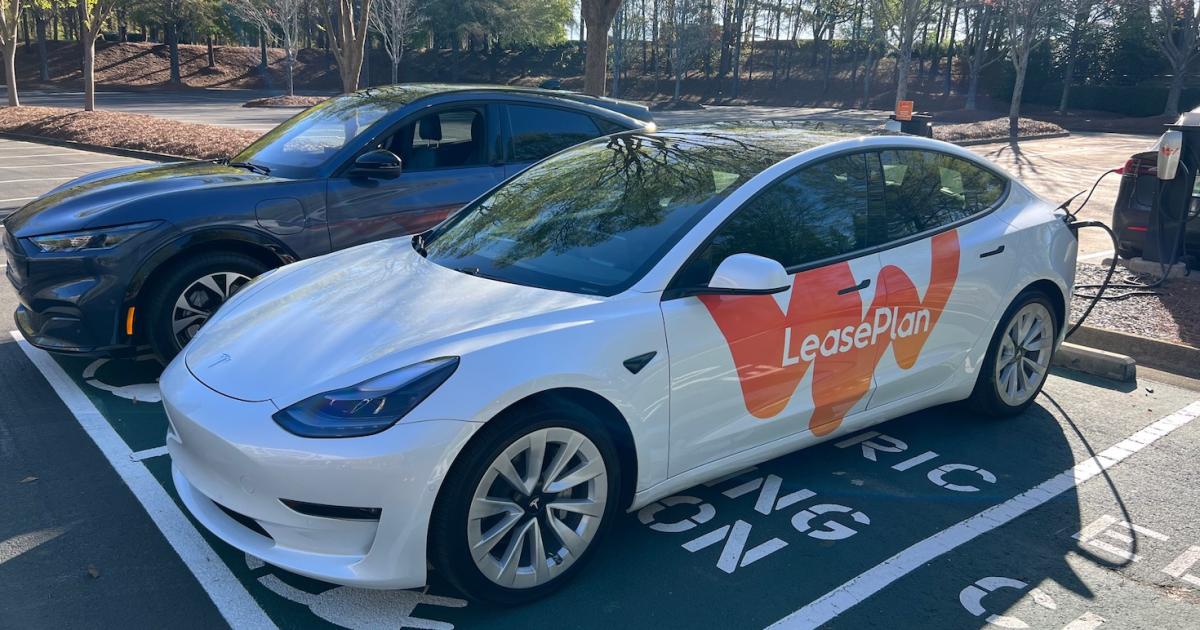Lots of corporations want to electrify their fleets, but many are trying to answer a critical question first: Is now the right time to do it?
That’s according to Matt Dyer, CEO and president of LeasePlan USA, a company that manages and leases 300,000 vehicles for corporate fleets around the country. Clients include major household brands with large retail footprints, package delivery operations and businesses with large teams of traveling salespeople.
Each company has different fleet needs and different motivations to electrify: Some want to boost sustainability, and others want to reduce total cost of ownership. Either way, one clear theme has emerged — uncertainty over the timing.
“The one point that does come out quite clearly is that customers are still trying to understand and evaluate, when is the right time to really drive for electrification?” Dyer said.
There are few different reasons why that’s the case. One of the biggest concerns for companies right now, Dyer said, is the availability of electric vehicle models that can handle their demands.
“In order to see businesses and business-critical fleets covered, we need more models that reflect commercial usage,” Dyer explained. Vans and trucks are especially lacking, and even where they exist, they aren’t always available in sufficient quantities: Some of LeasePlan’s clients replace 1,000 vehicles every year.
The other major obstacle, of course, is charging. LeasePlan’s strategy in Europe — where the company has a few more years’ experience transitioning to EVs — relied heavily on public charging infrastructure. Dyer said that the U.S. is lagging in that regard, forcing LeasePlan and its clients to depend a lot more heavily on home charging.
Despite those challenges, LeasePlan USA has had some success electrifying fleets. Dyer estimates that his company puts a new EV on the road in the U.S. every five hours. Worldwide, LeasePlan reports that a quarter of its new vehicle activations in 2021 were battery electric or plug-in hybrids. The goal is zero tailpipe emissions for the company’s vehicle stock by 2030 — a fleet that includes sedans, SUVs, light duty trucks and delivery vans; the company’s heavier-class vehicles would be electrified as new models become available.
“Electrification and the transition to EVs goes right to the heart of LeasePlan as an organization,” Dyer said.
That may not be the case for every one of its clients. LeasePlan approaches each fleet separately, starting with an assessment of the business’s needs, budget and timeline. From there, it develops a unique electrification strategy and helps the company implement it.
Some of this is old hat for LeasePlan: Designing and managing fleets is its bread and butter. When those fleets are fully electric, Dyer said, there’s a lot more involved. The company has built out entirely new teams to handle the unique challenges of EVs.
“We have had to adapt and shape ourselves to make sure we can support our customers in the right way,” he said.
Customers are still trying to understand and evaluate, when is the right time to really drive for electrification?
One of those teams is focused on charging: Not only making sure clients are outfitted with the home chargers they need but also pushing for the installation of more public chargers. Another new capability for LeasePlan is training: Helping drivers feel comfortable with electric vehicle models that are often critical to day-to-day business. And LeasePlan has doubled down on its relationships with vehicle manufacturers: Keeping a finger on the pulse of which EV models are available or in development and using those insights to advise clients.
LeasePlan also recently created an “EV Readiness Index” that gives a state-by-state breakdown of EV penetration, incentive structures and charging availability. The key takeaway: Not a single state ranked as “fully EV ready.” Dyer said some states, such as California, ranked high on concentration of EVs but lower on public charging infrastructure. In states where that was reversed — lots of charging, but few EVs — there’s a lot more room for growth in EV fleets, Dyer said.
Nevada, Mississippi and Hawaii ranked as the best states overall in EV preparedness, thanks mostly to strong charging infrastructure and favorable climates (cold weather is not a friend to EV batteries.)
Dyer said the EV Readiness Index aims to help clients answer that same question they’ve been asking all along: Is it the right time to electrify my fleet?
And by pointing out the gaps in infrastructure and incentives, LeasePlan hopes to highlight what fleets will require on the road to electrification.
“It’s our role to make sure that the needs of those customers are really understood,” Dyer said.












